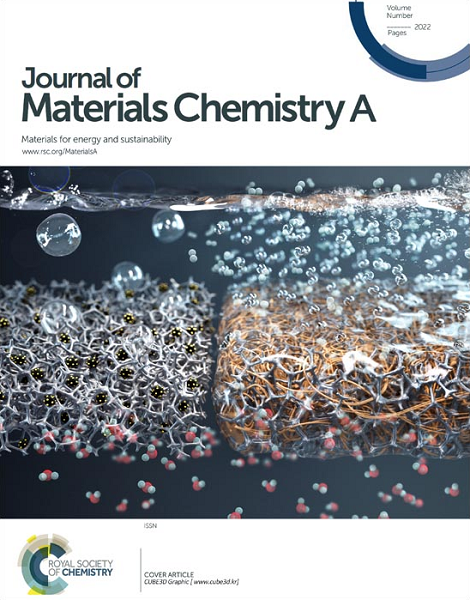Recycle of organic ligands and solvents for successive synthesis of Cu-based nanocrystals towards CO2 hydrogenation
IF 10.7
2区 材料科学
Q1 CHEMISTRY, PHYSICAL
引用次数: 0
Abstract
Colloidal synthesis serves as an advanced method for the fabrication of functional Cu-based metal oxide nanocrystals (MOx NCs) towards CO2 hydrogenation owing to its capability to finely regulate NCs and its excellent reproducibility, while its practical application is severely hindered by the high cost. The expensive organic ligands of metal precursors and the large volumes of solvents are directly discarded after the fabrication process, which dominates the cost of colloidal synthesis. Herein, we modified the traditional colloidal synthetic method for the cost-efficient production of high-quality MOx NCs with the recovery of organic ligands, synthesis solvents, and purification solvents. Furthermore, the recovered solvents were all reused for 5 rounds of successive synthesis of reproducible Cu-based multimetallic oxide NCs. The obtained CuO/ZnO/ZrO2 NCs were applied to CO2 hydrogenation and displayed a high formation rate of 413.0 mgMeOH·gcat.-1·h-1 as well as a selectivity of 77.5% towards methanol over prolonged operations, which were superior to many Cu-based catalysts reported recently.回收有机配体和溶剂,用于连续合成铜基纳米晶体,实现二氧化碳加氢
胶体合成法是一种先进的制备铜基功能性金属氧化物纳米晶体(MOx NCs)的方法,可用于 CO2 加氢,因为它能对 NCs 进行精细调节,并具有良好的重现性,但其高昂的成本严重阻碍了其实际应用。金属前驱体中昂贵的有机配体和大量溶剂在制造过程结束后被直接丢弃,这在胶体合成的成本中占据了主导地位。在此,我们对传统的胶体合成方法进行了改进,通过回收有机配体、合成溶剂和纯化溶剂,低成本高效率地制备出高质量的 MOx NCs。此外,所有回收溶剂都被重复使用,连续合成了 5 轮可重复的铜基多金属氧化物 NCs。获得的 CuO/ZnO/ZrO2 NCs 被应用于 CO2 加氢,在长时间的操作中显示出 413.0 mgMeOH-gcat.-1-h-1 的高生成率和 77.5% 的甲醇选择性,优于最近报道的许多铜基催化剂。
本文章由计算机程序翻译,如有差异,请以英文原文为准。
求助全文
约1分钟内获得全文
求助全文
来源期刊

Journal of Materials Chemistry A
CHEMISTRY, PHYSICAL-ENERGY & FUELS
CiteScore
19.50
自引率
5.00%
发文量
1892
审稿时长
1.5 months
期刊介绍:
The Journal of Materials Chemistry A, B & C covers a wide range of high-quality studies in the field of materials chemistry, with each section focusing on specific applications of the materials studied. Journal of Materials Chemistry A emphasizes applications in energy and sustainability, including topics such as artificial photosynthesis, batteries, and fuel cells. Journal of Materials Chemistry B focuses on applications in biology and medicine, while Journal of Materials Chemistry C covers applications in optical, magnetic, and electronic devices. Example topic areas within the scope of Journal of Materials Chemistry A include catalysis, green/sustainable materials, sensors, and water treatment, among others.
文献相关原料
| 公司名称 | 产品信息 | 采购帮参考价格 |
|---|
 求助内容:
求助内容: 应助结果提醒方式:
应助结果提醒方式:


